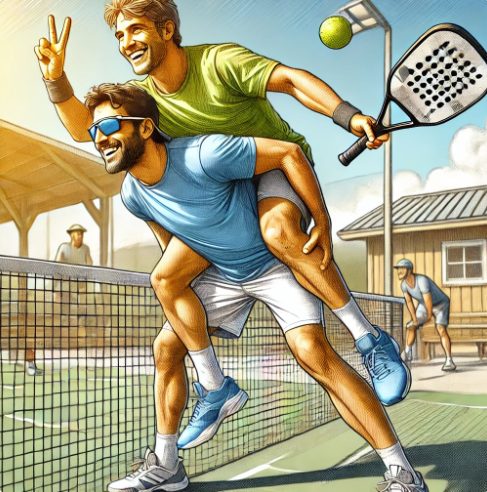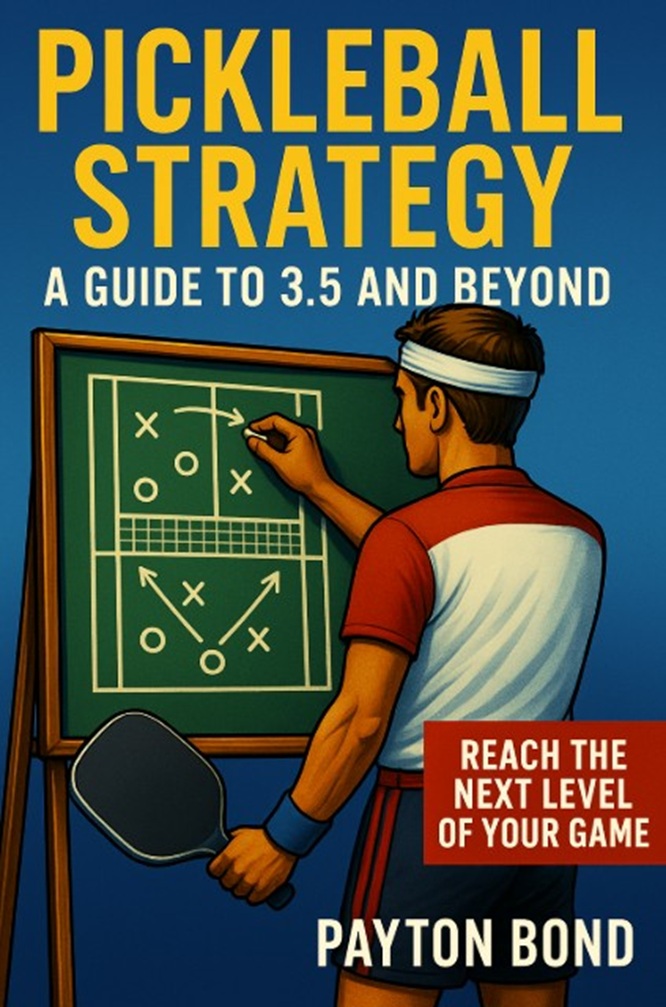
Pickleball Stacking: Court Positioning Like a Pro
Stacking in pickleball might sound like something you’d do with pancakes, but it’s actually an advanced doubles strategy that can take your game to the next level. By shifting positions at the start of a point, stacking ensures your strongest forehand is always in the middle of the court—because, let’s face it, backhands are a little trickier (and who doesn’t want to avoid them?).
Why Use Stacking in Pickleball?
Without stacking, doubles can get messy—especially when two backhands end up in the middle. That’s like sending your weakest link to guard the castle gate. Stacking solves this problem by positioning your team for success.
Here’s why stacking is worth the effort:
- Stronger Forehand Positioning: Always having a forehand in the middle of the court, you’ll have better control over shots to the center. Say goodbye to awkward backhands.
- Righty-Lefty Dream Teams: If one player’s right-handed and the other’s left-handed, stacking ensures you’re not doubling down on backhands in the middle.
- Dominant Forehand Advantage: Even if both players are right-handed (or left-handed), stacking lets the stronger forehand player dominate the center, giving your team an edge.
Who Controls Stacking?
If you’re a left-handed player often paired with right-handed players, learning how to stack and encouraging your partners to use it is essential. Let’s face it—there are far more right-handed players in the game. If your partner hesitates because they don’t understand stacking, reassure them by offering to guide the process—telling them where to position themselves and what to do. Mastering stacking is critical if you want to advance to the 3.5+ skill level, as playing without it often leaves left-handed players at a disadvantage.
For right-handed players, stacking might not seem as essential, but it’s still a valuable strategy to discuss with left-handed partners. Understanding and utilizing stacking effectively can help you and your partner neutralize weaknesses and advance your game.
Good opponents will always recognize mixed-handed pairings and exploit the center of the court, targeting serve returns, third shots, and dinks to elicit weaker backhand responses. Stacking minimizes this vulnerability, giving your team a strategic edge.
How Stacking Works
Stacking isn’t just about standing in the right place—it’s about teamwork and timing. Here’s how it plays out:
- On the Serve: The serving team stacks so the stronger forehand is in the middle after the serve.
- On the Return: The returning team stacks to cover the court effectively and prepare for the all-important third shot.
Think of it as a well-choreographed dance—if both partners know their moves, stacking keeps your team in control.
Challenges of Stacking
Before you start stacking in every game, let’s talk about the fine print:
- Coordination is Key: If you and your partner don’t communicate, stacking can look less like strategy and more like chaos.
- Practice Makes Perfect: Start stacking in casual games before trying it in tournaments. Missteps in competitive play can lead to some interesting conversations with your partner.
When to Start Stacking
To hit the 3.5+ skill level, stacking should be in your toolbox. Here’s how to ease into it:
- Start with Half Stacking: Focus on stacking during the serve (offense) to get the hang of it. Once you’re comfortable, add stacking on defense too.
- Practice in Recreational Matches: Build your confidence and learn the timing without the pressure of a tournament.
- Focus on Key Points: Use stacking during critical moments like the serve, return, and third shot, where positioning matters most.
Pro Tip: Full vs. Half Stacking
- Full Stacking: Use stacking on offense and defense.
- Half Stacking: Stack only on offense or defense. Start here to keep things simple before going all-in.
Take Your Game to the Next Level
Stacking is more than just a cool trick—it’s a strategic game-changer. Whether you’re playing with a righty-lefty duo or optimizing a team of two righties, stacking helps you control the center and play to your strengths.
So, are you ready to level up? Keep practicing, keep communicating, and keep stacking. Your opponents won’t know what hit them—except, hopefully, your perfectly placed forehand.
Check out Payton Bonds new eBook!
Pickleball Strategy – A Guide to 3.5 and Beyond
See it on Amazon.

👤 Follow Payton Bond
All Star and Top Contributor on multiple Facebook Pickleball Forums.
Contributor at TheKitchenPickle.com.
Visit Payton Bonds Facebook Page
Ready to Learn More?
Check out the next posts for detailed tips on stacking during the serve and the return of serve.

